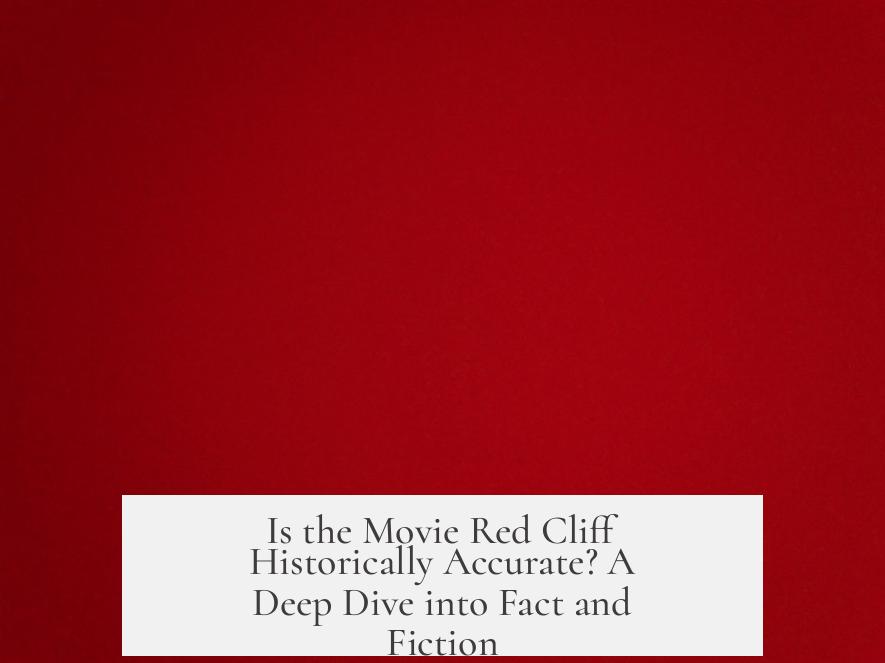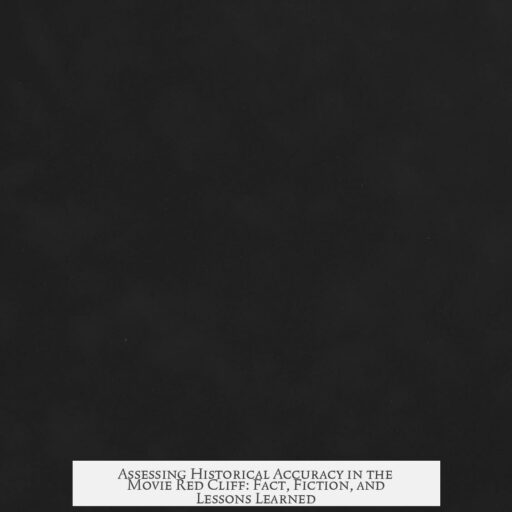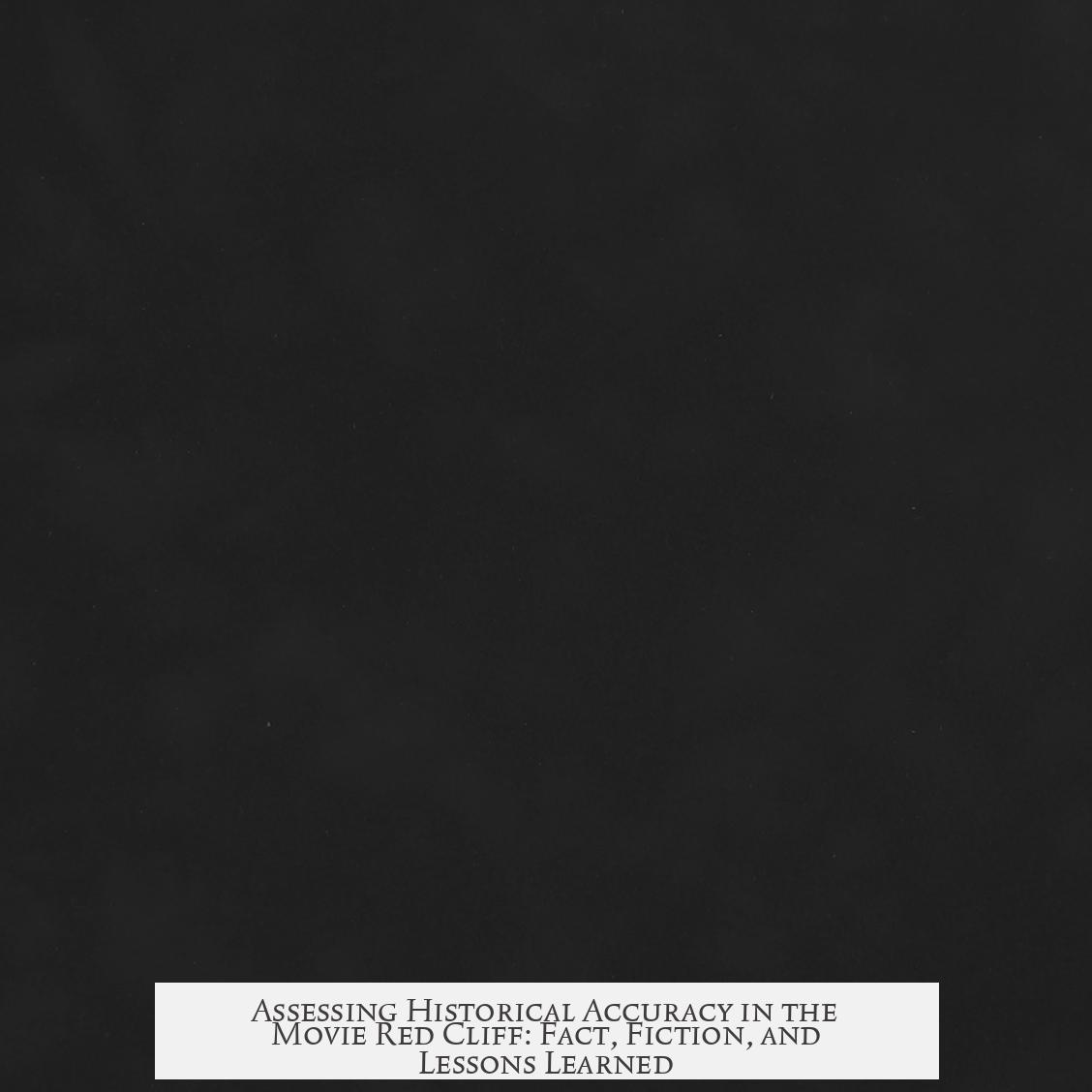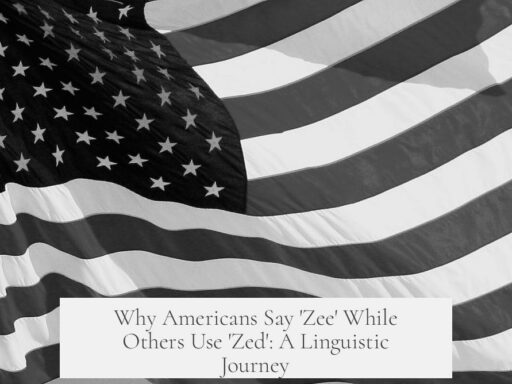Red Cliff is largely a work of fiction and not historically accurate. The film draws heavily from the novel Romance of the Three Kingdoms, which is itself a romanticized and dramatized retelling from the Ming dynasty, rather than from strict historical records. It takes many creative liberties, especially in how it portrays characters and battle events.
The narrative fabricates or alters key elements of important historical figures and events surrounding the famous Battle of Red Cliffs (208-209 AD). For instance, the motivation given to Cao Cao for attacking southern China in the film diverges significantly from reality. Cao Cao’s real aim was to control the strategic Jing province; he targeted Liu Biao’s successor, Liu Cong, before turning focus on Liu Bei and Sun Quan. This occupation occurred peacefully, through surrender rather than violent conquest.
The depiction of battles has notable discrepancies. The famous cavalry attack on Liu Bei at Changban slope was a surprise raid aiming to disrupt supplies, not a prolonged, bloody conflict as the film suggests. The battle tactics portrayed, like the dramatic “goose formation” for infantry, lack historical basis. The goose formation was a documented archer formation, not a frontline infantry tactic.
Character portrayals diverge from historical records in many ways. For example, Zhao Yun’s heroic rescue of Liu Bei’s family at Changban included safe escorting but no suicides by jumped wells. Zhang Fei’s courageous stand was authentic but simplified; he did not use reflective shields as depicted, only destroying a bridge to block the enemy. Guan Yu was absent from this battle entirely, tasked elsewhere gathering naval forces. The suggestion of female participation in the battle, such as Lady Sun or Lady Qiao actively fighting, is fictional—history records no women involved.
Some famous scenes are entirely fabricated or misattributed. The film’s qin (stringed instrument) duel between Zhuge Liang and Zhou Yu never happened; the two had minimal interaction. Likewise, the idea that Cao Cao sent infected corpses across a river to spread disease is false. More realistically, he used fallen soldiers as a bridge material for retreat over difficult terrain. Further exaggerations include the portrayal of extremely large naval fleets using CGI-enhanced visuals, while historical evidence suggests Cao Cao’s navy was modest and hastily trained.
Political and personal relationships are often misunderstood or romanticized. The film implies Liu Bei’s marriage to Lady Sun was a pre-battle alliance, when it was arranged later for strategic reasons. Cao Cao’s supposed lust-driven conflict over the Qiao sisters lacks historical support and the poem attributed to him was composed after the events. Cao Cao was actually well-regarded by many court officials, with trusted generals and allies.
Costume design is one aspect of the movie where it garners some historical credit. The attire and armory reflect known styles relatively accurately, giving viewers a decent visual sense of the era’s clothing and armor.
The military strategies credited to key strategists in the film are mostly inventions or exaggerated versions of real tactics. For example, Zhou Yu’s false surrender plan was genuine and a key factor in Cao Cao’s defeat, unlike scenes dramatically tweaking roles or assuming fictional characters like Gan Xing. Zhuge Liang’s famous arrow-retrieval maneuver is based on later myths, not historical fact.
The film’s overall tone and presentation prioritize entertainment over historical fidelity. Battles are grandly staged with CGI effects, dramatic speeches, and invented personal rivalries that seldom appear in authentic records. The movie is more about myth-making and heroizing than educating on the true complexities of this seminal conflict.
Better understanding the Battle of Red Cliffs requires relying on historical texts and records, such as Records of the Three Kingdoms by Chen Shou, supplemented by critical analysis of Romance of the Three Kingdoms as literature rather than history.
- Red Cliff is based more on a historical novel than factual accounts, featuring many fictionalized scenes.
- Key figures’ motivations and actions in the film differ from historical sources.
- Major battles are simplified, exaggerated, or invented for dramatic effect.
- Female participation and some mythical elements are purely fictional.
- Costumes in the film maintain some authenticity.
- The film should be seen as entertainment, not a historical documentary.
Is the Movie Red Cliff Historically Accurate? A Deep Dive into Fact and Fiction

In a nutshell: Red Cliff is not historically accurate.
If you expect a documentary on the Battle of Red Cliffs, this film is not the place to look. Instead, Red Cliff draws heavily from the Romance of the Three Kingdoms, a 14th-century Ming dynasty novel filled with dramatic license and myth-making rather than strict historical fact. The movie takes further liberties, especially concerning its female characters, turning much of the film into entertaining fiction rather than factual history.
Let’s unpack what the real story says—and where Red Cliff takes creative detours.
The Novel vs. History: Where Red Cliff Gets Its Story
The film bases its narrative on the Romance of the Three Kingdoms, a classic work dramatizing and romanticizing the events at the end of the Han dynasty and the start of the Three Kingdoms period in China. The novel itself is more myth than history, written centuries after the events it describes.
Even then, Red Cliff doesn’t stick entirely to the novel’s details, adding and reshaping elements for dramatic flair. The most notable example? The female characters, who are given significant roles and dramatic arcs in the movie but historically had no involvement in the battle.
Is this a problem? Not necessarily. It makes for better cinema. Just don’t confuse the movie with a history lesson.
Key Historical Inaccuracies in Red Cliff

The fun begins when we compare the film’s scenes with historical records. Expect some eye-openers.
- Kong Rong’s Fate: In the movie, he sharply criticizes Cao Cao’s campaign. Historically, Kong Rong’s execution wasn’t linked to this battle, but due to persistent disrespect toward Cao Cao and the court, predating the Battle of Red Cliffs. His family also suffered a grim fate.
- Cao Cao’s Campaign Purpose: Contrary to the movie’s premise, Cao Cao didn’t attack the South because of Liu Bei or Sun Quan specifically. His initial target was Jing Province under Liu Biao. Only after Liu Biao’s death and Liu Cong’s surrender did Cao Cao turn his attention to Liu Bei and later Sun Quan.
- Occupation of Jing Province: Cao Cao’s takeover was bloodless; Liu Cong surrendered without a fight. Cao Cao installed generals to maintain order and even granted Liu Cong the title of marquis — a far cry from the brutal conquest depicted in the film.
- Changban Cavalry Attack: The movie shows a fierce, destructive battle at Changban slope. In truth, Cao Cao’s swift cavalry strike aimed to prevent Liu Bei from reaching supplies at Jiangling, not to annihilate him. This resulted in a retreat rather than a drawn-out battle, with Cao Cao also capturing abandoned supplies and refugees.
- Refugees at Changban: It was an unnamed soldier (not a named character) who suggested leaving refugees behind to speed up their defense setup. Liu Bei opposed this, valuing people’s support over a single garrison—showing a pragmatic leader.
- Zhao Yun’s Heroics: Zhao Yun indeed escorted Lady Gan and Liu Shan to safety, but there is no record of anyone committing suicide by jumping into wells in despair, contrary to scenes in the film that aim for emotional impact.
- Zhang Fei at Changban: His legendary stand happened at the Changban bridge, where he destroyed the bridge and bravely challenged Cao Cao’s approaching troops. The film’s reflective shield spectacle is a creative invention.
- Guan Yu’s Absence: Guan Yu was not at Changban. Historically, he was delivering Liu Bei’s navy to Jiangling at that time, joining Liu Bei only later at Xiakou.
- Cao Cao’s Naval Command: The movie has Cai Mao and Zhang Yun commanding Cao Cao’s navy, but historically, Cao Cao trained his own naval troops at Xuanwu Lake, who fought Sun Quan’s forces. Cai Mao and Zhang Yun had no such roles and certainly weren’t executed as portrayed.
- Liu Bei’s Royal Claims: The film emphasizes Liu Bei’s title as “Royal Uncle” and royal bloodline. Historically, this status is unproven, and genealogical records suggest his claimed royal lineage was questionable at best.
- Zhuge Liang’s Debate: The movie shows Zhuge Liang engaging Wu scholars in intellectual sparring. Actually, it was Zhou Yu’s confident words that convinced Sun Quan to battle Cao Cao, not any formal debate led by Zhuge Liang.
- Sun Quan’s Fear Factor: Far from fearful, Sun Quan was an avid hunter—his favorite prey was tigers! The poet Su Shi noted Sun Quan’s skill in tiger hunting, turning the common tale of “fear” into irony.
- Women in Battle: The fierce female leads do not have historical basis. Lady Sun and Lady Qiao played no part in the battle.
- Size of Cao Cao’s Fleet: The CGI fleets of thousands of ships make for great visuals, but the actual fleet was nowhere near that scale. Cao Cao couldn’t have summoned 800,000 troops as claimed; a realistic estimate hovers around 200,000 soldiers, many unfamiliar with naval warfare.
- Fire Attack Tactics: The iconic fire attack led by Huang Gai was historical and pivotal. However, the narrative that Zhou Yu dismissed the plan is false; he fully embraced Huang Gai’s cunning strategy that caused Cao Cao’s downfall.
- No Qin Battle or Musical Duels: Forget the cinematic qin (Chinese zither) battle between Zhou Yu and Zhuge Liang. Historical records show almost no interaction between the two; and Zhuge Liang wasn’t a commanding strategist but merely an advisor at this time.
- Horse Meng Meng: This horse is a pure cinematic invention. Horses named after boats? No. And Zhuge Liang breeding horses? Doubtful, given he was mostly a scholar.
- Cao Cao’s Rewards: The idea that Cao Cao rewarded soldiers for football game victories is a stretch. Football existed as entertainment and training, but promotions came from more serious achievements, not scoring goals.
- Cao Cao’s Biological Warfare: The movie shows Cao Cao using dead bodies to spread disease. No historical evidence supports this. The grim truth was that many of Cao Cao’s soldiers fell ill due to unfamiliar southern climates, which hampered his forces significantly.
- Political Marriages: The marriage between Liu Bei and Lady Sun did happen but later, after the battle of Nanjun, aligning political interests rather than battlefield alliances.
What Did Red Cliff Get Right?
One area where Red Cliff shines is its costume design. Wardrobe historians note that the film’s costumes are relatively faithful to the period’s styles, lending an authentic visual flavor to the grand spectacle.
Can You Learn History from Red Cliff?

Short answer: No.
Romance of the Three Kingdoms is more myth than fact, and Red Cliff leans into that, prioritizing entertainment over strict accuracy. It’s a rich, sweeping cinematic experience loaded with grand battles, emotional arcs, and heroic imagery. But for historical truths? Trust primary sources and scholarly works over Hollywood dramatization.
Are you craving history? Dive into texts like Chen Shou’s Records of the Three Kingdoms. Want epic storytelling? Red Cliff delivers in spades.
Why So Much Creative License?
Why does Red Cliff toss accuracy aside? Simply put, storytelling demands drama. Movies need heroes, villains, emotional conflicts, and thrilling battles. History, with its messy complexities and often understated events, doesn’t always provide that kind of narrative punch. Filmmakers amplify relationships, invent characters, and condense timelines to keep audiences hooked for over four hours.
For example, the emotional backstories of the Qiao sisters or female generals may not be historically grounded but serve key roles in the film’s narrative arcs.
Lessons for History Buffs Watching Red Cliff

- Enjoy the cinematic artistry — the battle scenes, costumes, and music are stunning.
- Don’t take every line as fact — separate entertainment from history.
- Use the film as a springboard — get curious about the era and explore actual historical records afterwards.
- Appreciate the creative efforts — fiction can open doors to cultural and historical interest.
Final Thoughts
Red Cliff shines as a spectacular work of historical fantasy, a gripping tale inspired by legend rather than logic. It is a film to inspire awe and interest, not a classroom lecture. Want the battlefield’s real story? Let the historians guide you.
Next time you watch Red Cliff, consider: How do epic tales shape our understanding of history? Does the drama enhance or obscure the truth? Are the heroic legends worth the fog of fiction they bring?
Whether you watch for history or heroism, Red Cliff offers a mesmerizing journey into China’s legendary past—just keep a critical eye open.




